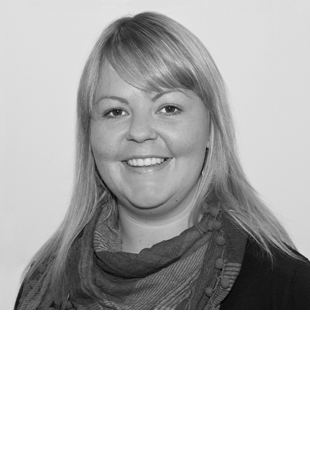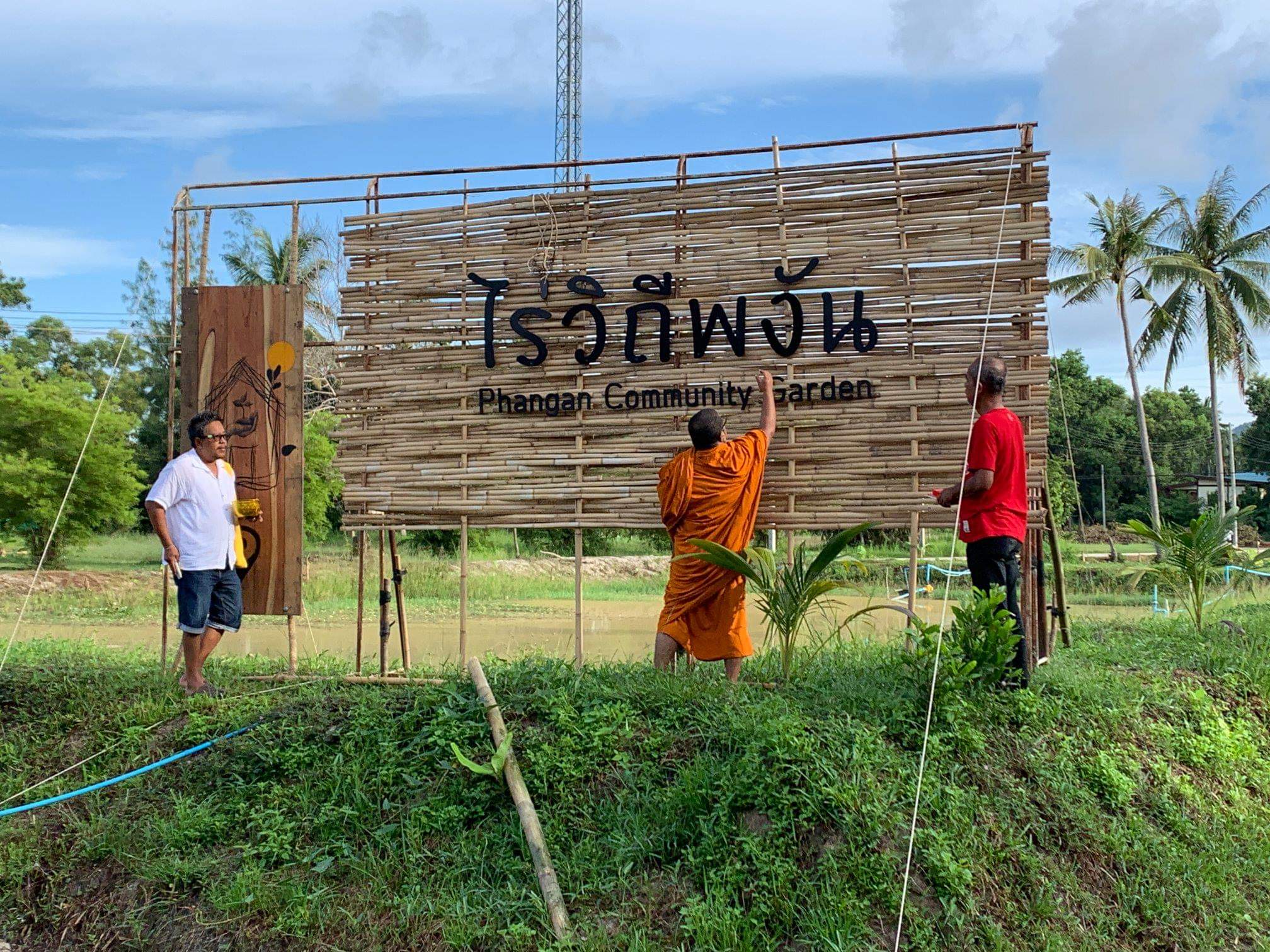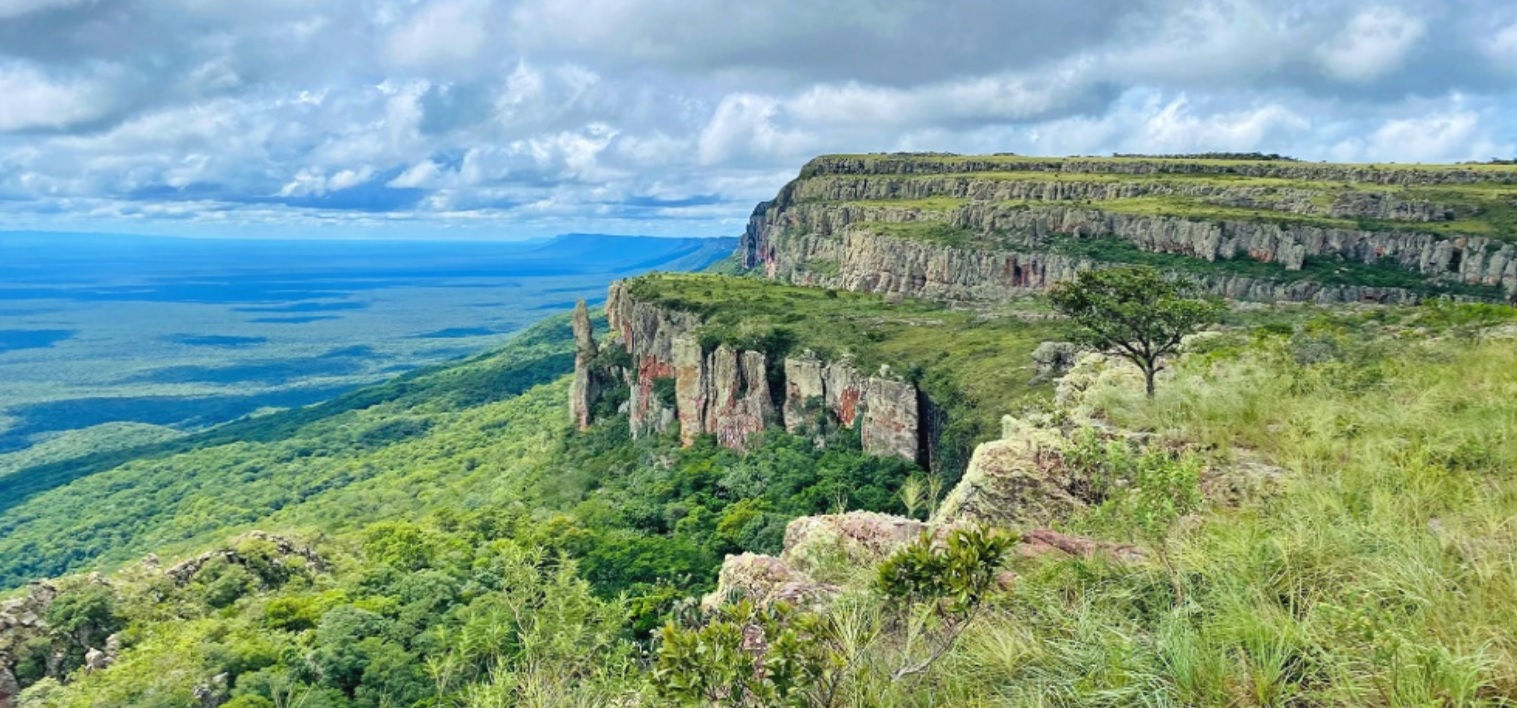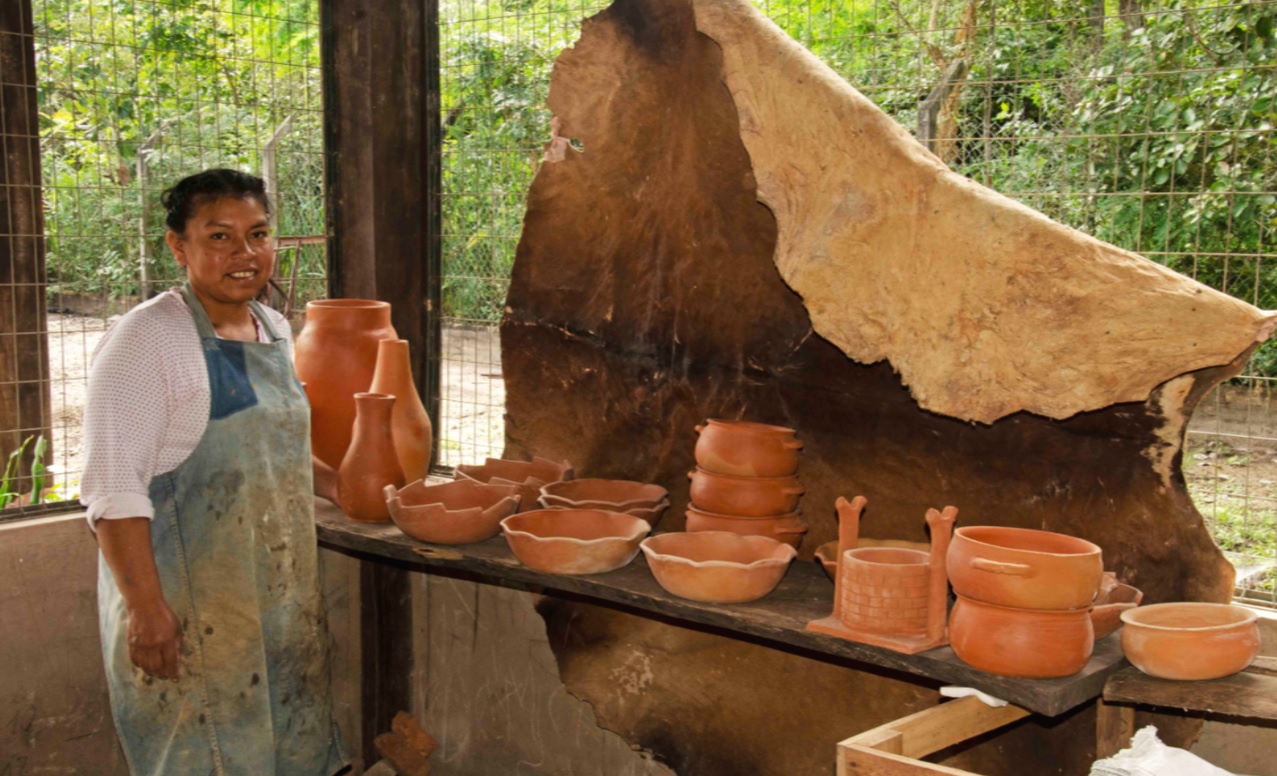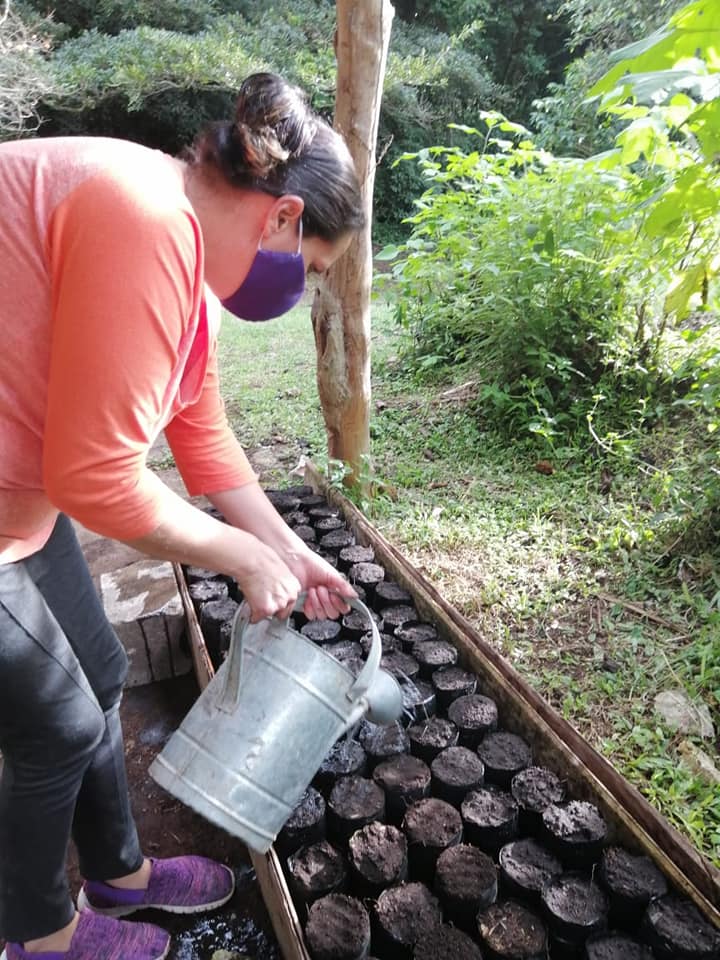Localism, livelihoods and circular economies: The role of local foundations in creating opportunities and building more durable communities
04 Aug 2021
As the pandemic took hold around the world and borders closed, local communities pulled together. New community-driven initiatives were born, and local leaders played instrumental roles in ensuring that no one was left behind. Many communities also used the crisis as an opportunity to pause and reflect collectively, rediscovering the power of local connections, shared values and collective action. Others came to recognize deep flaws in the economic models upon which their communities were based, experiencing first-hand the consequences of over-reliance on external supply chains or on a single sector. In this partner-led session the EcoThailand Foundation, Fundación Semilla (Bolivia) and Monteverde Community Fund (Costa Rica) shared their approaches to addressing food security issues, supporting alternative livelihoods, and creating opportunities in their communities during COVID-19.
In January 2020, Thailand was the first country outside of China to record a case of COVID-19. While Thailand initially did an effective job of curbing the spread of the virus, other consequences of the pandemic quickly started to manifest. Pre-pandemic, 80% of the Thai Gulf economy was based on tourism. But with borders closed and domestic travel made near impossible, Gulf communities faced the reality of losing the three million tourists they used to receive monthly. The fragility of the local economy was exposed and with no “Plan B” countless individuals were left without work.
According to John Fitton, EcoThailand Foundation’s Director, national level interventions and INGO responses were slow, inappropriate and inflexible. In contrast, Gulf communities – where taking care of neighbours is a natural impulse and part of the community fabric – responded rapidly and flexibly. The first responses centred around emergency food aid, though it was clear that more sustainable solutions to food security needed to be developed locally. EcoThailand supported the establishment of five community gardens on Koh Phangan, supplemented by additional financial contributions from community members. The gardens were community-driven, with those working and volunteering in them being from the surrounding communities. More than just a source of nutrition for vulnerable individuals, however, the gardens became a meeting point for Thais and foreigners alike living in Gulf communities. They discovered that they could unite and work as a cohesive, productive and joyful unit. The social aspects of the gardens have become equally as important as the food provision.
Those involved in the gardens hope that what emerged from an emergency will become a permanent fixture in their communities – and they have an eye on the long-term. Some are now preserving food in order to serve wider populations. Beyond this, several gardens have started planting tree seedlings to support reforestation efforts. And while the risks of being overly dependent on tourism are now clear, some gardens are cautiously considering how to integrate eco-tourism into their future plans. Speaking about the gardens and EcoThailand’s work to support their growth, John referred to a quote from the Buddhist monk Por Taan Lop: “Use the present to build a path to a better future.”
In Bolivia, the Fundación Semilla – a socio-environmental fund – had just started to operate in 2019. Eduardo Franco, the foundation’s President, shared that the pandemic was especially challenging for a young organization just finding its feet. Bolivia faced its own set of challenges. The Chiquitano Forest, which covers 20 million hectares across Bolivia and Brazil, lost 300,000 hectares over 2020 due to deforestation. While the world was preoccupied with the pandemic, the forest was being rapidly transformed into profitable soy crops. The 36 indigenous communities who call the forest home were losing their ancestral territory.
Many Chiquitano women produce traditional ceramic goods – skills that have been passed from generation to generation. But the pandemic disrupted their work, leaving many of the women emotionally distressed. Ceramics, more than being a source of income, are a fundamental part of their culture. During the production process, women would work closely together: this was their community and identity. In the face of the pandemic, many were forced to spend their life savings on medical care, instead of purchasing needed supplies for ceramics production.
Semilla stepped in and supported Chiquitano women to maintain their ceramic work, ensuring local livelihoods would survive the pandemic. Some questioned why this should be a priority for an organization that is focussed on environmental issues? Eduardo explained that the presence of indigenous women in these communities is vital: they are the guardians of large, bio-diverse ecosystems. Without income from the ceramics, they would have had no choice but to migrate to larger urban centres in search of alternative work – in the process losing their identity, while the forest would lose its most valuable protectors. Semilla offered similar support to women in other communities cultivating honey, producing traditional handicrafts, and re-establishing eco-tourism.
Monteverde, Costa Rica, like the Thai Gulf, was also highly dependent on tourism prior to 2020. Since the 1990’s 90% of the local economy had revolved around it. Jannelle Wilkins, a board member of the Monteverde Community Fund (MCF), explained that they went from a “high season” of 200,000 tourists annually to a “no season” once the borders closed. The one silver lining was the fact that the vast majority of tourism businesses in Monteverde are locally-owned. This meant that there was a network of actors in place, facing the same challenges and who were ready to act in the best interests of Monteverde in the long-term.
The existence of MCF itself was critical. MCF already had an existing Emergency Readiness Fund in place from a previous natural disaster, which meant that funds could be rapidly disbursed in cooperation with the local government. Local and international funds mobilized in response to the pandemic were also channelled through MCF, and MCF set up a new micro-grants scheme ($100 – $500 USD each) to address immediate issues. Additionally, MCF quickly set up a food bank, stocking this with fresh produce purchased from local farmers who had previously served hotels. These farmers then used this income to purchase more seeds and continue working – also with a focus on diversifying the food they were growing. These swift actions raised MCF’s credibility and profile across Monteverde.
At the community level, ENLACE was formed: a new community-led structure with an unusual alliance of partners that may have seemed near impossible pre-pandemic. ENLACE was made up of five sub-commissions (MCF staff were active on three), that looked at the overall health of Monteverde during the pandemic. Developing a more resilient circular economy was at the heart of ENLACE’s work. One of ENLACE’s initiatives was the introduction of a new local digital currency, “VERDES.” Participating in environmental actions addressing climate change and sustainable agriculture, volunteering in the community, and enrolling in continuous learning classes are all ways to earn VERDES. The VERDES platform has an online store where people can sell anything, though VERDES are most in use are at the local farmers’ market and a recycling shop. VERDES allow for Monteverde residents to barter and trade locally produced products and services more equitably, while also building the resiliency of the Monteverde economy in the long-term.
Jannelle reflected on the “new normal” for Monteverde: can some of the new, more flexible, collaborative and locally-focussed ways of working that have emerged over the course of the pandemic be sustained? As borders reopen, it would be easy to go back to the way things were. But, moving forward, should Monteverde be a small, tight-knit community or a world famous tourist destination (and is it possible to be both)? While there is still uncertainty, one powerful image representing shifting local values is that the old bullring in Monteverde has been converted into a community garden.
Key takeaways from the session for community philanthropy practitioners
- Moments of disruption can – and perhaps should – move local actors into different areas of action. While having a clear mission and vision is important, thinking laterally, being imaginative and flexible, and moving where community needs are is key in times of crisis. In other words, be ready to “see with different eyes.”
- Understanding what local assets exist (environmental, cultural, economic, human, etc.) is fundamental in nurturing better-connected and more economically diverse and resilient communities.
- To be sustainable, efforts to reimagine local economies must be community-driven and based on local visions, wisdom and realities. Local foundations should facilitate this community action – but not drive it – by providing funding that aims to be “the oil in the engine that makes the other parts work smoothly together.”
- COVID-19 was a dress rehearsal for future disruptions, including the climate crisis. For some communities, in fact, “disruption is a fact of life.” Take the time to reflect on lessons learned from the pandemic to be better equipped, capable and ready to act when the next shock hits. Question “Why were we so surprised?” and “What can we do to not be so surprised the next time?”
Thoughts on how funders (international and local) can support this work
- The pandemic has shown the complexity of issues in communities, and how the environment, health, economics, community cohesion, etc. are all deeply linked to one another. The days of funding in issue siloes are perhaps best left behind, and funders should instead consider overall community health – and the local organizations that build this. Funding interdisciplinary work should be the norm.
- Fund people instead of projects – as it isn’t always clear what the “project” is going to be, and only those who are closest to the issues should be deciding what actions are most appropriate, or likely to make a real difference.
- Related to this, trust the people on the ground doing the work. Funders should be “gardeners” cultivating communities, rather than funding machines, fixing perceived problems from the outside. A good start for any conversation is: “What can I do to help?”
- Having flexible resources ready to be deployed quickly in times of crisis makes all the difference. Funders should be encouraged to think along these lines, and provide patient, flexible funding when investing in partners for long-term success.
About this webinar series
The GFCF’s grantmaking in 2020, 2021 and 2022 has supported our community philanthropy partners in their local responses to COVID-19, both in the short and longer term. Surveys of grant partners revealed clear commonalities across our global network in the issues these organizations were facing. Over 2021, we offered a series of partner-led and organized learning and sharing sessions to delve into these topics further. See the other sessions on: Building local philanthropy against the backdrop of COVID-19; Engaging marginalized and minority groups; Community philanthropy and participation; and, Getting it right with corporate philanthropy.

